On International Yoga Day, we look at 7 commonly performed yogasanas and the many benefits they have on your physical and mental well-being...
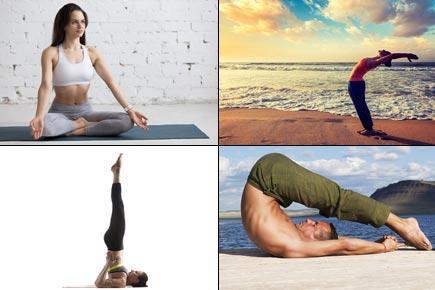
International Yoga Day
Sukhasana: Also known as Easy Pose, Decent Pose, or Pleasant Pose it is practiced by sitting in a cross-legged position. The practitioner should ensure to keep his/her spine straight and thus maintain an erect posture while seated with the eyes closed.
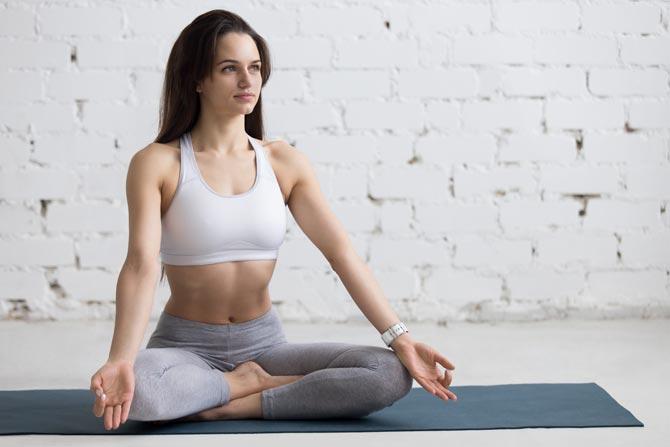
ADVERTISEMENT
While opening the hips and lengthening the spine, the asana's relative ease on the knees makes it easier than siddhasana or padmasana for people with physical difficulties. An additional blanket or pillow under the buttocks may also be beneficial and steadying so as to prevent the person from slumping forward. It has been advocated as suitable for attaining Enlightenment by 20th century Jnana Yoga guru Ramana Maharshi.
Surya Namaskara: Alternatively called Salutation of the Sun, this commonly practiced yoga form 'links together twelve asanas in a dynamically expressed series. A full round of Surya namaskara is considered to be two sets of the twelve asanas, with a change in the second set where the opposing leg is moved first. The asanas included in the sun salutation differ from tradition to tradition.
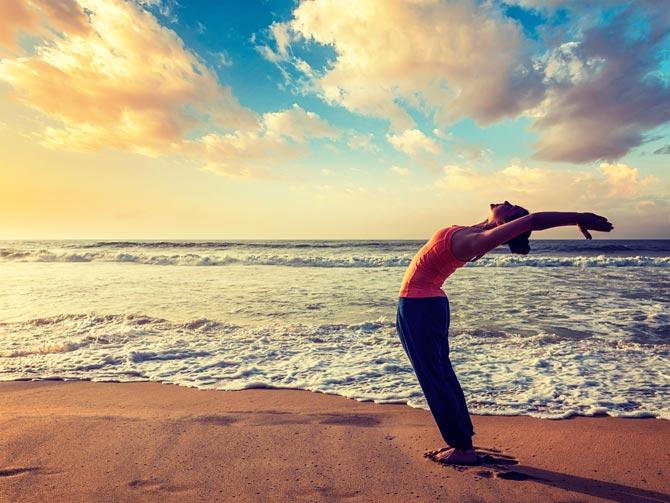
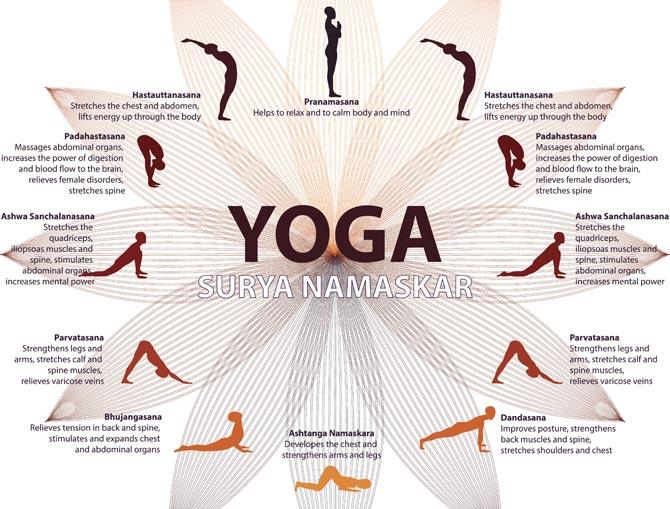
Surya Namaskar is relaxing and rejuvenating, and tension, stress and anxiety melt away.
Shavasana: Shavasana or the Corpse Pose is an important technique that enables total relaxation of the mind and body. It's an excellent way to reduce stress and tension.
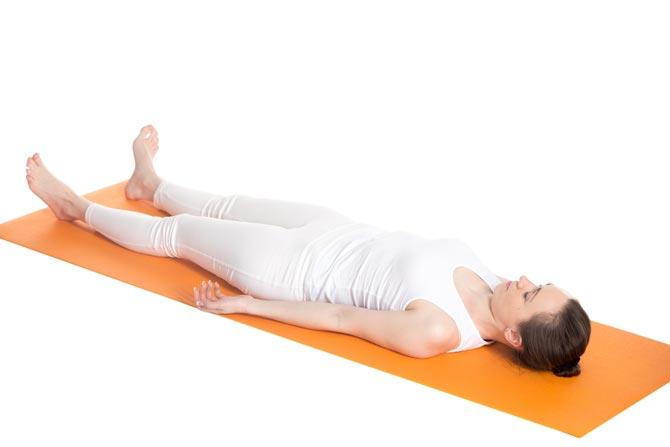
Although not scientifically proven, Shavasan is known to decrease heart rate, rate of respiration, blood pressure, muscle tension, general anxiety, improve concentration and memory among other things.
Sirsasana: Performed by doing a headstand, the body is completely inverted, and held upright supported by the forearms, while the crown of the head rests lightly on the floor. Nicknamed the 'King' of all the asanas, it contains numerous health benefits if performed right and regularly. People with high blood pressure, heart palpitations, glaucoma, detached retina, conjunctivitis, brain disease, brain injury, menstruation, severe hypotension or hypertension, hiatal hernia, obesity, neck injury, and back injury should not perform this.
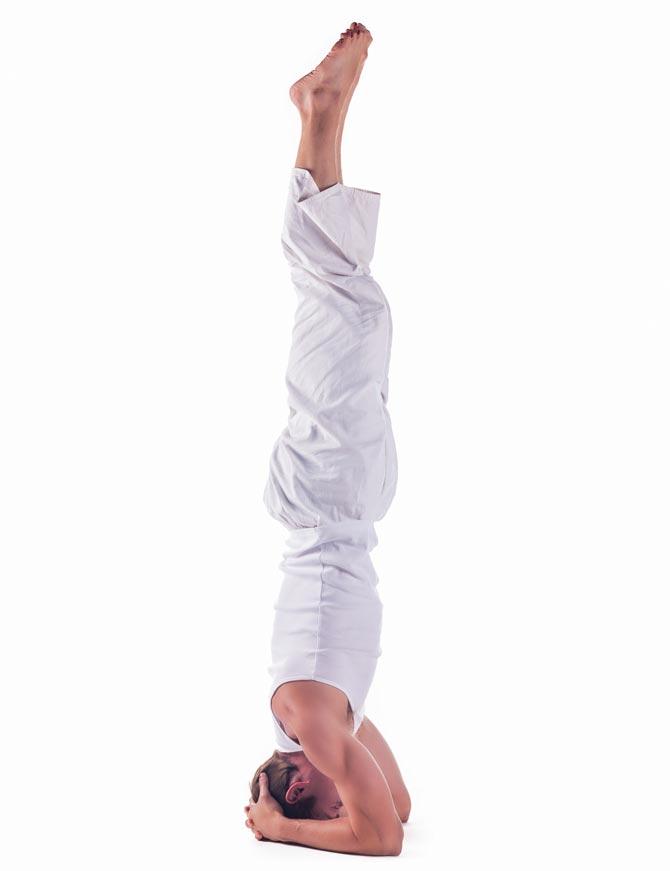
The inverted position facilitates freshly oxygenated blood flow to your brain, which stimulates your pituitary and pineal glands to alleviate stress, insomnia, depression among other mood disorders. The asana can lengthen your spine and ease pressure on your lower back. Sirsasana can be done unsupported or against a wall.
Sarvangasana: Nicknamed the queen or mother of all asana and also known as the Shoulderstand, it is performed by lying on the back with the hands under the mid-back, the legs and lower body are lifted so that the weight of the body is supported on the head, neck, shoulders and upper arms.

Sarvangasana brings relief for people suffering from varicose veins. It arrests age degeneration and has a beneficial effect on the sex glands of both sexes, especially for women suffering from misplacement of the uterus and also has a positive effect on the prostrate in men among other health benefits.
Matsyasana: Also called Fish Pose, the asana is a a backbend, where the practitioner lies on his or her back and lifts the heart (anahata) chakra by rising up on the elbows and drawing the shoulders back. The neck is lengthened, and the crown of the head Sahasrara chakra is "pointed" toward the 'wall' behind the practitioner. As the arch of the back deepens with practice, and the heart and throat open further, the top of the head may brush the ground, but no weight should rest upon it.

Matsyasana stretches and expands the chest and lungs and is good for relieving stiffness in the neck and shoulders. It believed that users of this asana can float on water. It improves digestion by stretching the digestive organs, relieves constipation and respiratory disorders like asthma and bronchitis.
Halasana: Halasana, known as Plow Pose, is when the practitioner lies on the floor, lifts the legs, and then places them behind the head. Experienced practitioners may enter Halasana from a standing position by tucking chin to chest, placing hands on the floor, walking the feet towards the hands and bending at the elbows to lower shoulders to the floor.
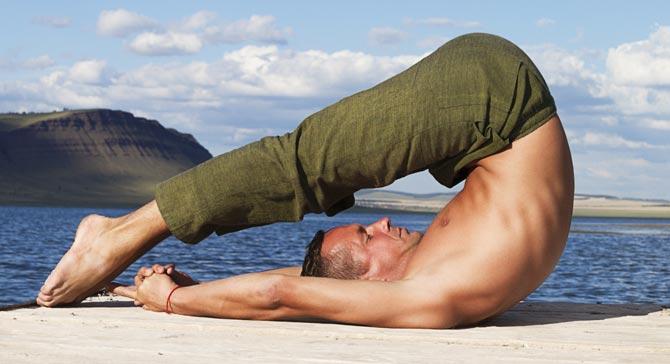
Halasana stretches all muscles and ligament in the practitioner's calves and thighs, resulting in greater leg flexibility, stimulates thyroid, parathyroid, throat, lungs and abdominal organs. It's effective for gas relief, upper/lower back pain or discomfort, aids digestion, therapeutic for leg cramps, menopause, infertility, insomnia, headache and sinusitis, stress and fatigue.
 Subscribe today by clicking the link and stay updated with the latest news!" Click here!
Subscribe today by clicking the link and stay updated with the latest news!" Click here!







